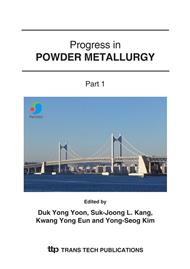p.1509
p.1513
p.1517
p.1521
p.1525
p.1529
p.1533
p.1537
p.1541
Effect of Li2O Addition on Piezoelectric Properties of NKN-5LT Ceramics
Abstract:
Recently alkali oxide materials, such as sodium - potassium niobate have drawn much attention due to their ultrasonic applicability and are also considered as promising candidates for a piezoelectric lead-free system. However, it is difficult to sinter such NKN-based materials via conventional sintering process. Therefore, in this study, dense 0.95(Na0.5K0.5)NbO3-0.05LiTaO3 (NKN-5LT) ceramics were developed by conventional sintering process. Sintering temperature was lowered by adding Li2O as a sintering aid. The electrical properties of NKN-5LT ceramics were investigated as a function of Li2O concentration. At the addition of 1 mol% Li2O, electromechanical coupling factor (kP) and piezoelectric coefficient (d33) of NKN-5LT ceramics were found to reach the highest values of 0.37 and 250 pC/N, respectively.
Info:
Periodical:
Pages:
1525-1528
Citation:
Online since:
January 2007
Authors:
Keywords:
Price:
Сopyright:
© 2007 Trans Tech Publications Ltd. All Rights Reserved
Share:
Citation:


